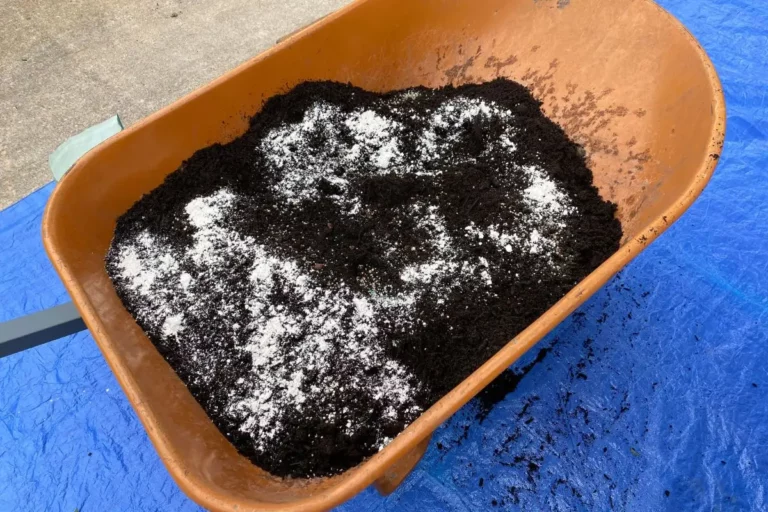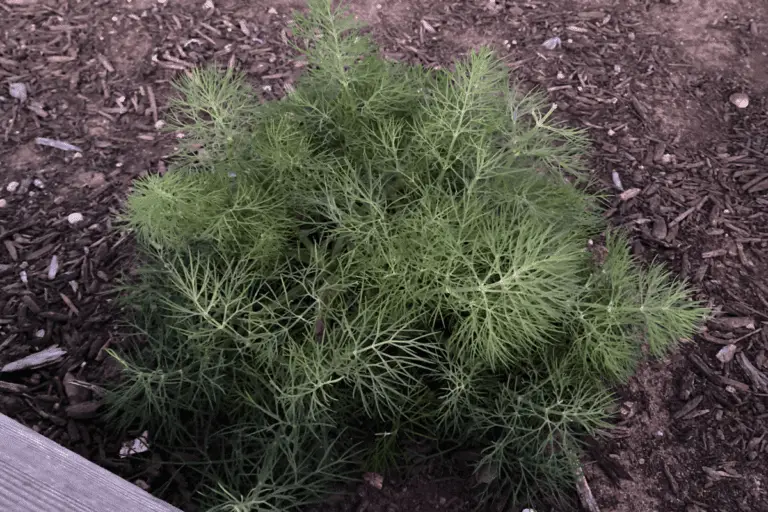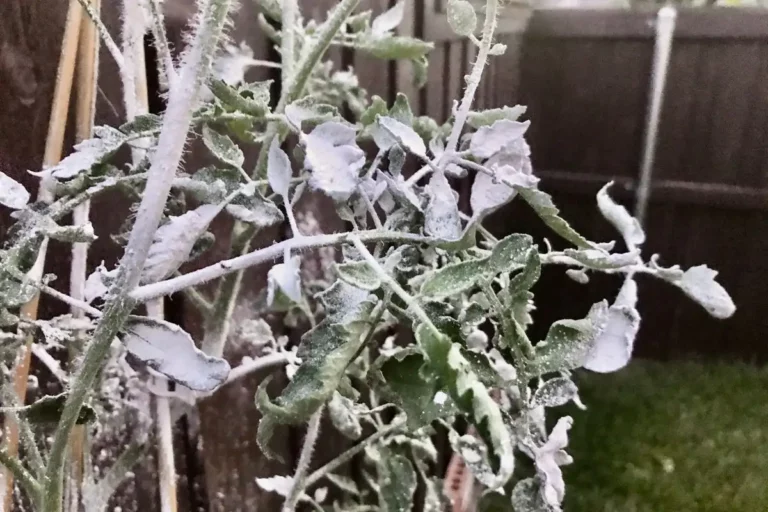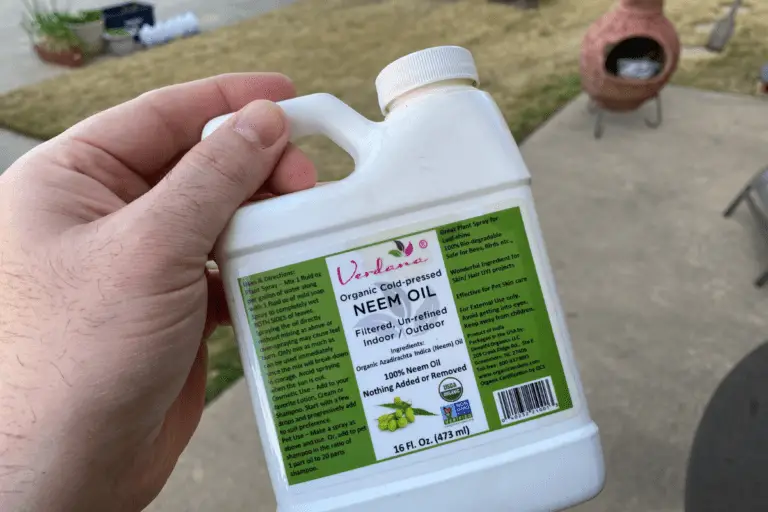Does Diatomaceous Earth Still Work After it Gets Wet?
Diatomaceous earth (DE) has a well-deserved reputation as a natural and effective pest control. You’ve got to be careful when using it—which I’ll explain in more detail below—but overall, I’m a fan of DE when it’s applied carefully and selectively.
The beauty of DE is in its simplicity: It’s not a chemical insecticide, but rather a mineral-based pest control agent that inflicts physical damage on bugs’ exoskeletons.
But DE needs to be reapplied quite often, especially after it gets wet.
Diatomaceous earth doesn’t work after it gets wet since water causes DE to wash away and lose its sharpness, making it less potent. When DE particles dry, whatever’s left of them regain their effectiveness, but for maximum impact against garden pests, DE must always be reapplied after it gets wet.
DE is one of those products that’s somewhat polarizing among gardeners.
Some people swear by it. Others won’t touch it for fear of killing off all the good bugs in their garden.
Me? I’m more of a pragmatist when it comes to DE.
If I can take care of my garden pest problems with something less potent—such as a good soapy water spray or some neem oil—I’ll probably try that first.
But when it comes to certain bug problems, DE is more effective than soapy water or neem oil yet much less destructive than a chemical insecticide like Sevin.
With that in mind, here’s what I’ll cover below:
- 4 reasons why diatomaceous earth doesn’t work after it gets wet.
- The steps you should take after DE gets wet.
- Information about how exactly rain impacts DE.
By the end of this article, you’ll have a better understanding of what happens when DE gets what, what you need to do afterward, and what you should keep in mind along the way.
4 Reasons Why Diatomaceous Earth Won’t Work After It Gets Wet
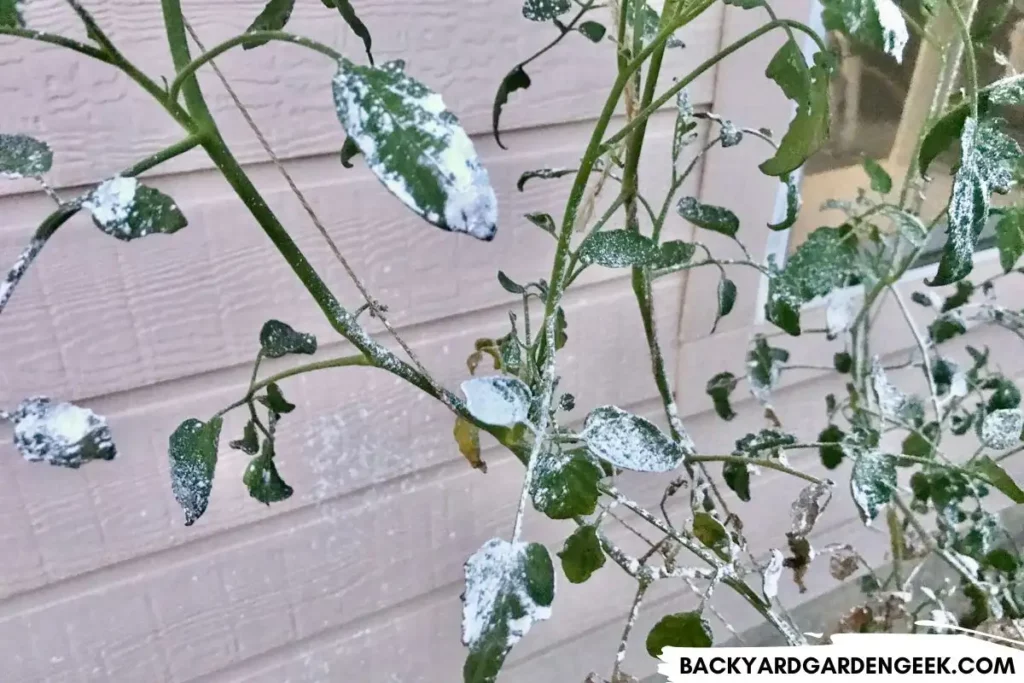
When it comes to diatomaceous earth, I’ve heard 2 related questions from time to time:
- Does DE only work when it’s dry?
- What happens when DE gets wet?
Let’s look at why DE works when it’s dry outside but fails when it’s wet. There are 4 reasons for this:
- The DE particles lose their sharp edges.
- Their absorption properties are compromised.
- They no longer adhere to insects, at least temporarily.
- They clump up when exposed to slight moisture and wash away when exposed to more than slight amounts of water.
Now let’s get into the details:
1. DE Particles Lose Sharpness
The unique makeup of DE is what makes it such an effective pest control tool.
Made up of tiny silica-based organisms called diatoms, each particle of DE, though microscopic and soft-feeling to us, is like a multitude of sharp shards to small insects.
These jagged edges can cut through the protective exoskeletons of insects, creating tiny openings that compromise their ability to retain moisture.
Unfortunately, when DE gets wet, the particles absorb moisture and clump together, dulling their sharp edges. They lose that keen cutting power, rendering them much less harmful to pests.
2. DE’s Absorption Properties Get Compromised
DE kills insects not just by cutting into their exoskeletons but also by sucking out their moisture and lipids, a process that leads to fatal dehydration.
Water, however, is a game-changer here (but not in a good way!).
When DE comes into contact with water, it immediately starts absorbing it, which means that it is no longer effective at pulling moisture from insects.
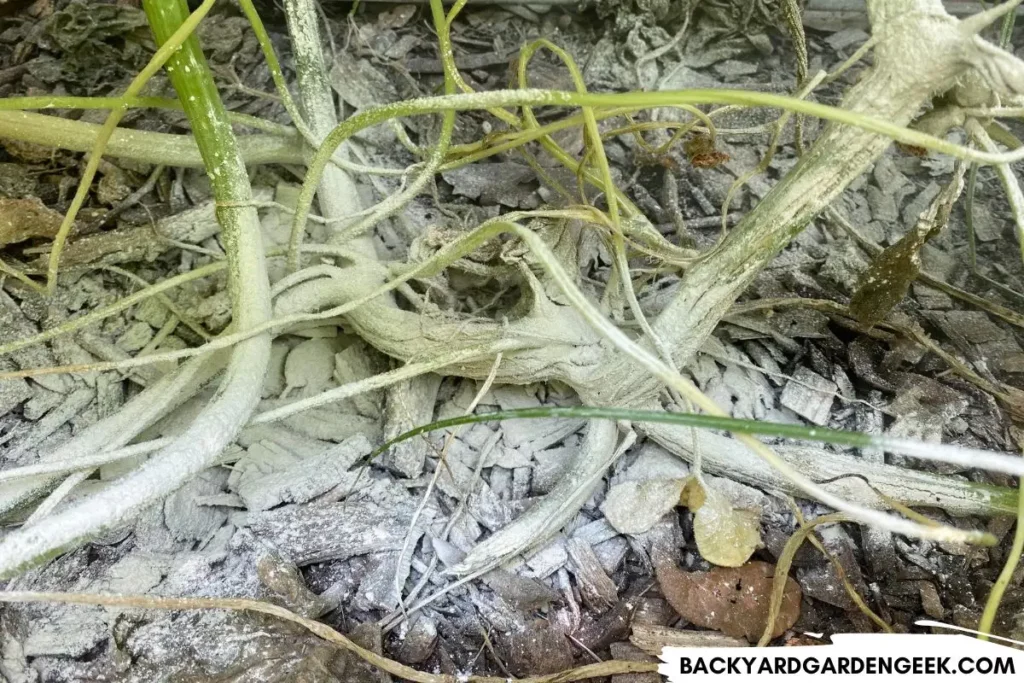
Imagine trying to soak up water with an already-saturated sponge. It’s not going to work very well!
3. DE Fails to Stick to Insects
Another significant feature of DE is its ability to stick to the bodies of pests, ensuring that the insects can’t just shake it off or easily clean it from their bodies.
If you’ve ever applied DE in your garden, you know what I mean. The flowery powder gets everywhere and sticks to everything, which is why I encourage gardeners to wear gloves and a mask whenever they apply it.
But when DE is wet, it doesn’t adhere to bugs as effectively because it’s already fairly stuck to the surface it’s on.
4. DE Isn’t Well-Distributed After It Gets Wet
Finally, wet DE won’t remain well-distributed across your garden.
When DE gets wet, the particles clump together, and they can get washed away from the treated areas, which then lose their protective cover against pests.
The precise, thin layer you carefully applied will turn into scattered clumps of DE that leave much of your plant unprotected.
This is why reapplications are so important. Once DE’s clumped up or washed away, it’s no longer doing its job.
If you’ve seen your carefully applied DE get washed away in a rain shower, don’t worry. The solution is simple!
Keep reading to learn what I do after my diatomaceous earth gets wet and how you can continue protecting your plants if this happens to you.
Do This After Diatomaceous Earth Gets Wet: A Guide to Reapplication
So here’s the important question: What do you do after your diatomaceous earth gets wet?
You might feel the urge to head right back out there as soon as the rain stops and reapply DE, but you should follow these key steps first:
Step 1: Wait for Complete Dryness
The first step is to wait until a) everything in your garden is completely dry and b) there’s no more rain in the immediate forecast.
DE needs a dry environment to work its magic. If you reapply while your plants are still damp, you’ll find that the DE clumps together and quickly loses much of its effectiveness (which would be a waste of good DE!).
Simply put, exercise some patience and hold off on your DE reapplication until you’re sure the moisture’s gone.
Step 2: Check How Much DE Has Been Washed Away
Now it’s time to take a close look at your plants: How much DE has been washed away or clumped together beyond use?
If you’ve only had a very light sprinkling of rain, you might have gotten lucky and have DE that’s somewhat undisturbed.
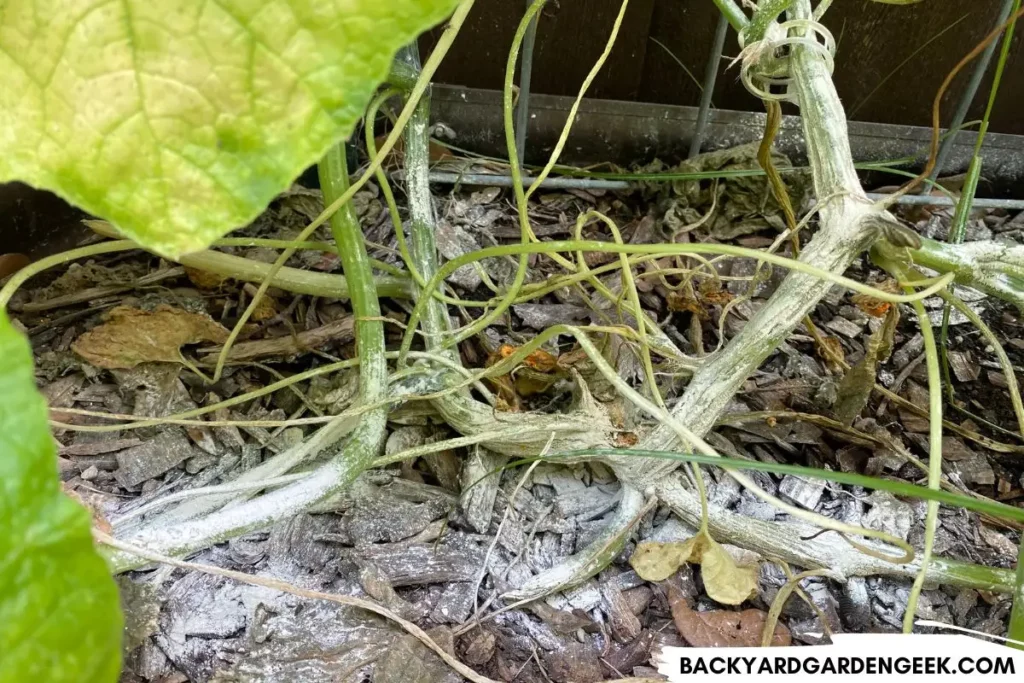
But in most cases, especially with moderate to heavy downpours, the DE will be partially or fully washed away or degraded, so be sure to check the DE distribution on your plants to determine the extent of the washout.
Step 3: Check for Bad Bugs
Now it’s time to take a look at the bug situation in your garden.
Were you able to knock back the pest population with your initial DE application, or are the culprits still visible on your plants?
If you still see bugs, you’ll need to consider if DE is your best option for further treatment or if there’s another course of action that might work better.
First, determine what’s attacking your plants. These are the pests that have bugged me (bad pun intended!) at one point or another over the past 5 years:
- Ants (the fire-ant kind!)
- Aphids
- Armyworms
- Cabbage Loopers
- Caterpillars
- Cucumber Beetles
- Flea Beetles
- Leaf-Footed Bugs
- Pinworms
- Slugs and Snails
- Spider Mites
- Squash Vine Borers
- Stink Bugs
- Thrips
- Whiteflies
Step 4: Make a Decision: DE or Soapy Water?
If the bad bugs you’re dealing with are soft-bodied, you might not need to reapply DE. Instead, you can switch over to a simple soapy water spray, which is less harmful to the beneficial bugs in your garden.
The decision to use DE should always be made carefully, considering its effect on beneficial insects and the state of your garden after rain.
Here are some articles I’ve written that’ll get you started:
- 4 Reasons Why Diatomaceous Earth Will Kill Bugs
- Can Diatomaceous Earth Harm Plants? What Scientists Say
- Diatomaceous Earth vs. Neem Oil: Which Should You Use?
- How Long Does Diatomaceous Earth Protect Your Plants
- What Bugs Does Diatomaceous Earth NOT Kill?
- Will Diatomaceous Earth Expire or Lose Its Effectiveness?
Step 5: Be Diligent and Check on Your DE Regularly
Check back about a week later to see if the DE is still there or if it needs to be reapplied.
The weather and the pests in your garden don’t operate on a schedule, so it’s crucial to keep an eye on the situation.
If the bad bugs are still making a meal of your plants and if your DE application has degraded or washed away, you might need to consider reapplying DE.
Keep in mind that these steps aren’t a one-time solution. You’ll need to monitor and adjust your approach based on what your plants need.
Will Rain Wash Away Diatomaceous Earth?
DE is not immune to the elements. Wind will blow its particles away, and heavy dews will degrade its effectiveness.
But rain, in particular, has a significant impact on the functionality of DE.
As it rains, the water will immediately diminish DE’s sharpness and absorption qualities, and the intensity of the rain will determine just how degraded your DE will be afterward.
A heavy downpour will likely wash away most, if not all, of the DE on your plants. But even a gentle shower can almost entirely dilute DE’s effectiveness, leaving behind a lesser and less evenly distributed amount of DE than what you had initially applied.
So what happens to the remnants of DE after the rain?
The leftover particles don’t become entirely useless. Once everything dries out, the remaining DE will regain its insect-killing properties.
But there will be significantly less DE on your plants, and the DE won’t be spread as evenly as before, making it much less effective overall.
I’ve even seen some people recommend applying DE using a garden sprayer. I’ve tried it, and although the DE will work once the water dries, it’s a poor, relatively indiscriminate way to apply it to your garden.
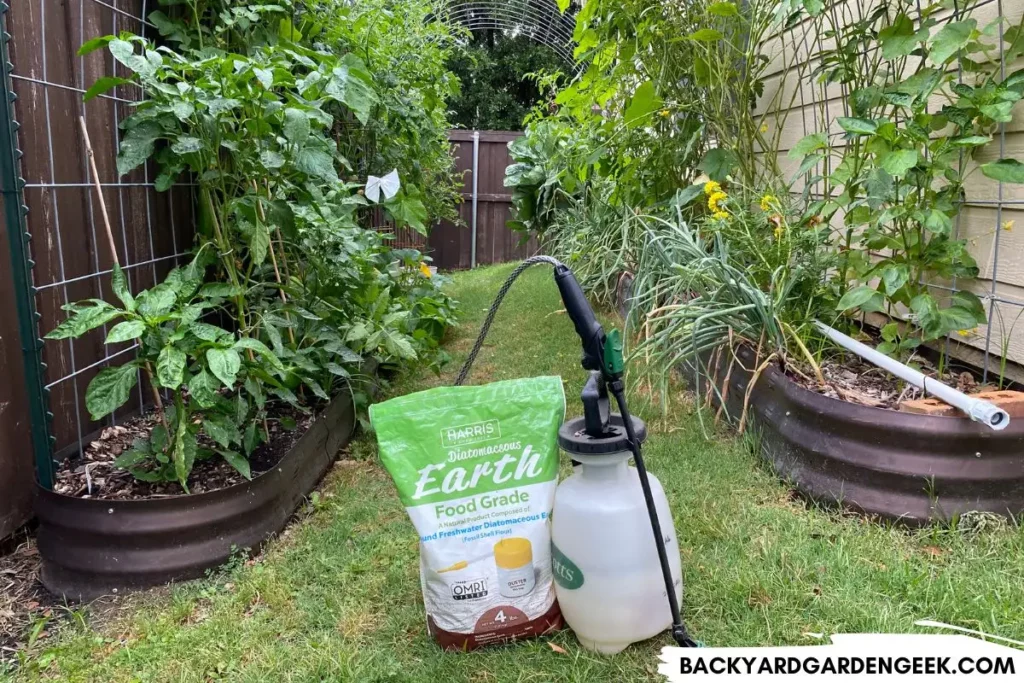
Over the years, I’ve found that it’s almost always necessary to reapply DE after rainfall (assuming I still need it).
But I’m not hasty. I always inspect my plants first to gauge the level of pest infestation and see how much DE is left. Based on my observations, I then decide what to do next.
For instance, I sometimes switch gears entirely. Instead of DE, I might opt for other pest control methods like soapy water, neem oil, or a Bacillus thuringiensis (BT) spray.
These alternatives are less aggressive than DE, which is a broad-spectrum solution that doesn’t discriminate between good bugs and bad ones.
Soapy water, neem oil, and BT Spray are a bit more selective, allowing me to target certain pests without causing much collateral damage to the bees and butterflies, earthworms, lacewings, and ladybugs in my garden.
Like anything else that takes practice, diatomaceous earth has a slight learning curve, but with patience and a little bit of strategy, you’ll find that DE can work wonders in your garden!
Want More DE Info?
If you’ve enjoyed this article, you might like other DE-related articles I’ve written.
Here are a few related posts:
- 5 Reasons to Mix Diatomaceous Earth with Soil
- 9 Ways to Spread Diatomaceous Earth in Your Garden
- 57 Bugs That Diatomaceous Earth Kills or Keeps Away
- Best Way to Apply Diatomaceous Earth to Plants: 11 Pro Tips
- Can You Put Too Much Diatomaceous Earth on Plants?
- Using Diatomaceous Earth: Do I Need to Wear a Mask?
- Using Diatomaceous Earth as a Fertilizer: Will DE Help?

